
Brian Parker and Kelly Cordes cramponing towards the divide in the Winds.
I opened the Blue Ice Harfang First Look with this note:
“The Blue Ice Harfang crampon exudes modernist sensibilities. It boasts a metallic-blue sheen, a compact package with a big punch, and a mix of materials making the Harfang as much at home in the mountains as an exemplar of high design. Our job here at WildSnow is to pull back the sheen, look past the hype, and determine long-term functionality.”
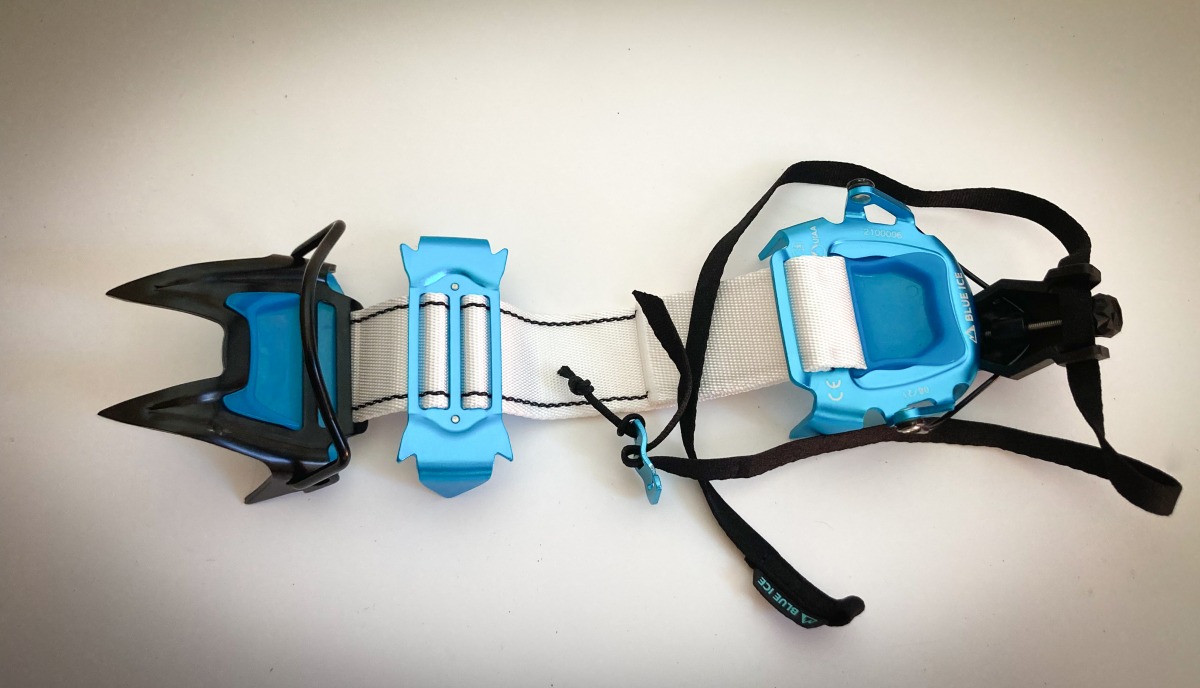
The Blue Ice Harfang crampon. Steel front, aluminum mid and rear sections, and an innovative textile connecting it all.
Cutting to the chase and capture, the Blue Ice Harfangs are the real deal. A lightweight crampon capable of taking a beating and providing excellent security in steep, icy, and snowy terrain. The crib notes from the first look are this: chromoly steel front section, an adjustable two-point aluminum mid-section, and an all-aluminum heel section, all attached by a length of adjustable UHMWPE and HTPE 40mm wide textile. (Steel front points penetrate better on firm ice than aluminum; they tolerate mixed climbing better yet are heavier.)
With repeated use over the winter and now into full-on spring, the connecting UHMWPE and HTPE textile remain durable and unfazed. As for balling up with snow, I’ve used the Harfangs on climbs where I’m alternating between warm/wet snow and colder/powdery snow, and I’ve not had the textile ball up or freeze when saturated. I’m conditioned to not hesitate when stepping across a talus field or tooling around on mixed terrain for fear of shearing the textile. The same goes for the aluminum mid and rear points—they show normal wear and tear, but so far, they are akin to my experience with aluminum points on comparable options from Petzl and Camp. I’m not tiptoeing across the tulips when using aluminum points, nor am I slamming points down on rocks like King Kong rattling a far away seismograph. I know what’s under my feet.
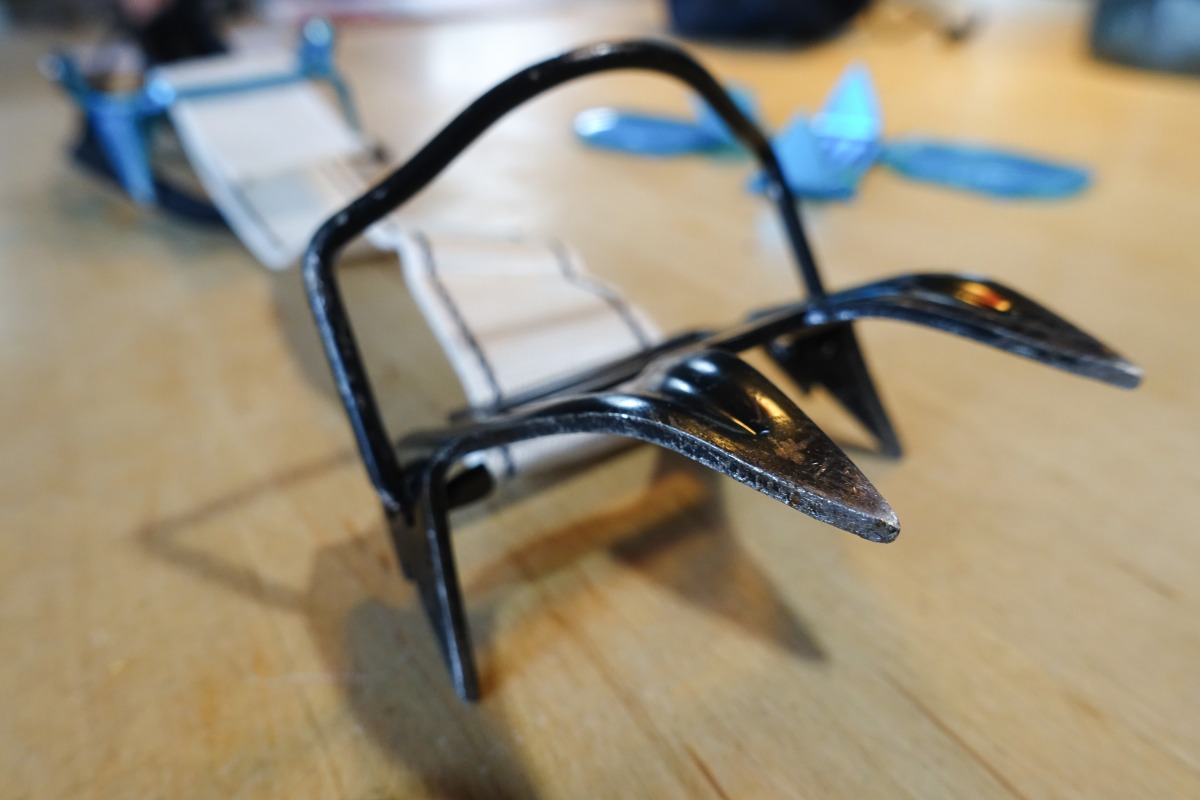
Minor wear and tear on the Harfang’s steel front points.
Regarding adjustability, I’ve used the Harfangs on four different boots this ski season. Ideally, you adjust the textile’s length, micro-adjust the heel lever, throw the lever, and ascend. Changing the crampon fit from boot to boot takes about five minutes per crampon. Once adjusted, I allow for some initial stretch in the textile; I then tighten the micro-adjustment a little bit more. But, as stated, if you have these fitted to a single pair of boots, adjust once and maybe observe for any looseness before entering dicey terrain, micro-adjust accordingly, and go.
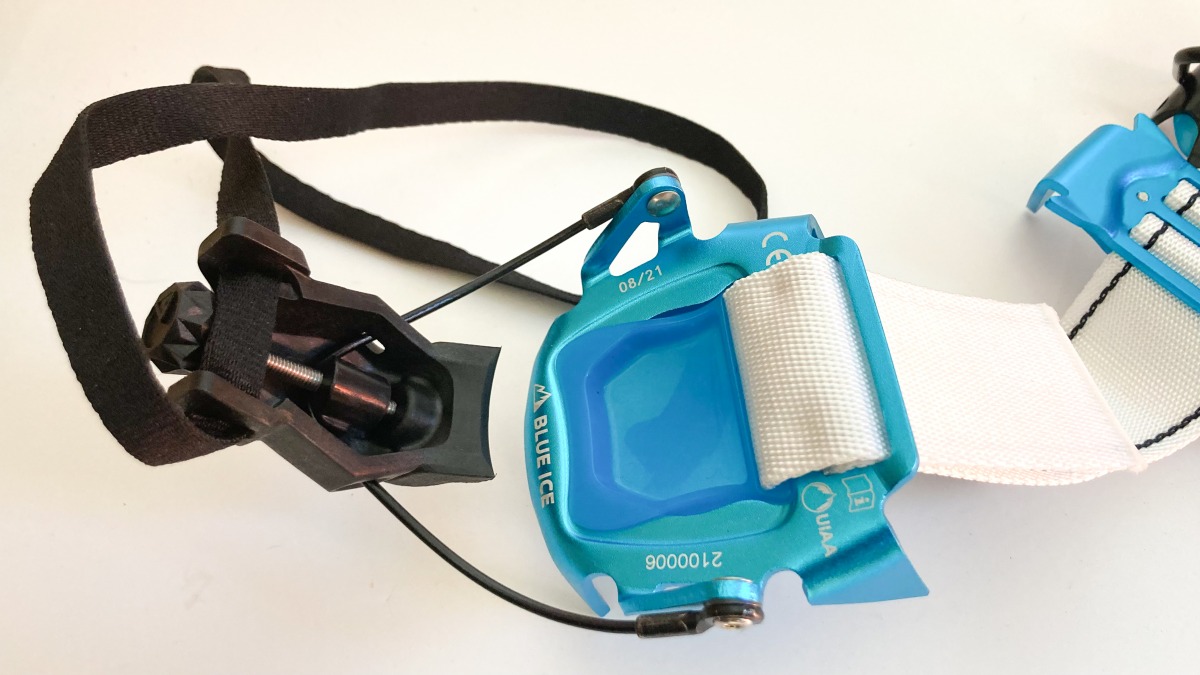
The Micro-adjustment is the round knob found on the heel lever and provides an easy system to dial in the fit.
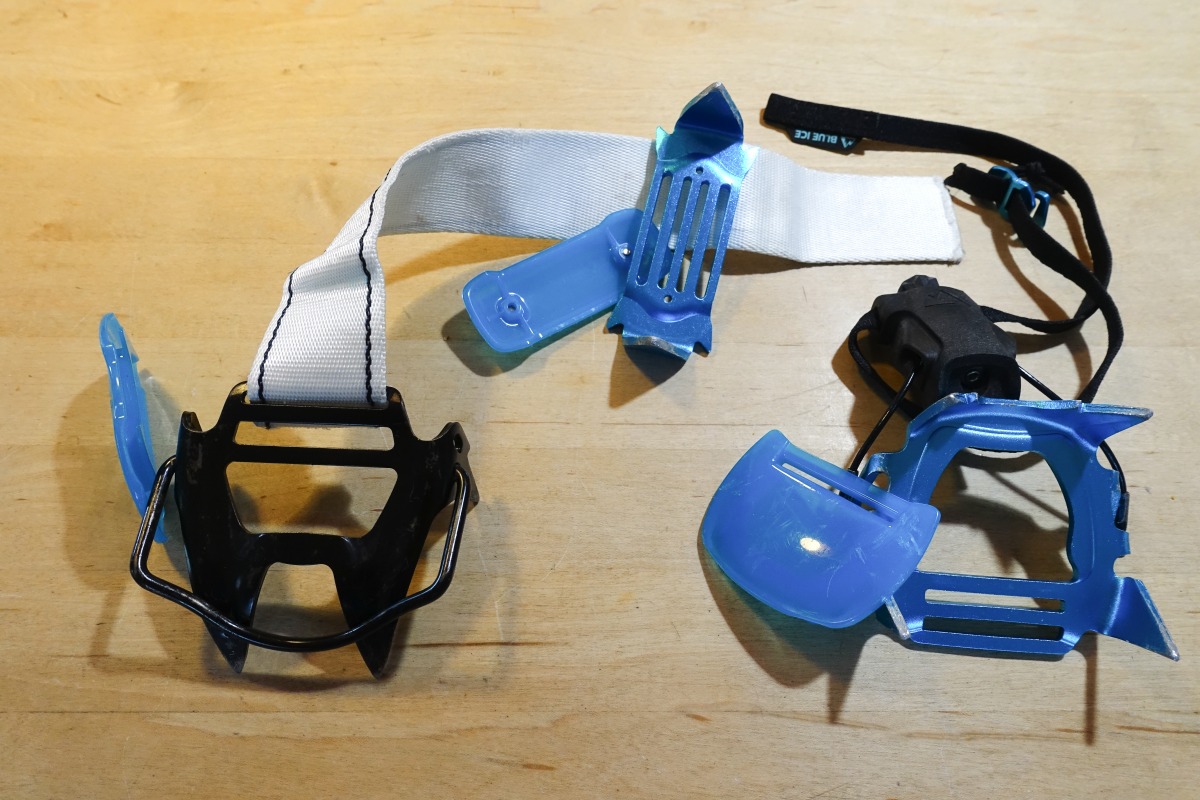
With the midsection and anti-balling plates removed, the Harfang weighs 176g/crampon.
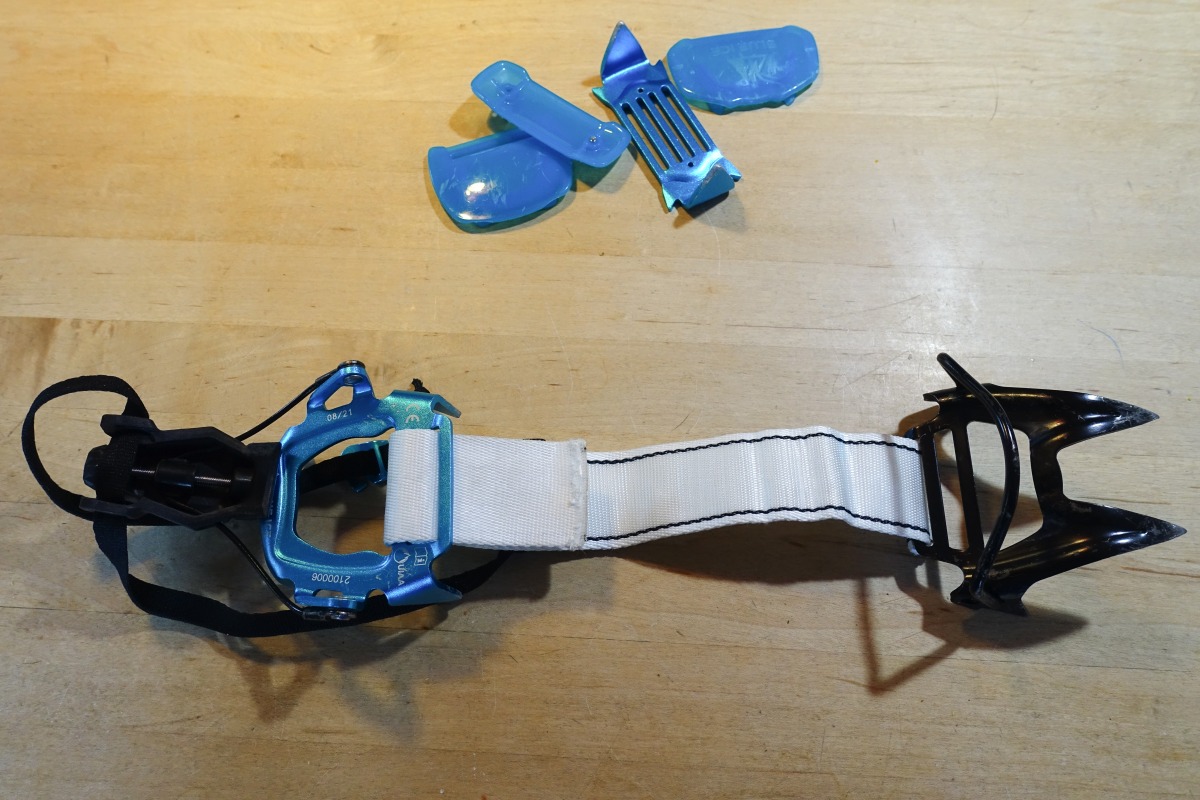
The Harfang sans the anti-balling plates and midsection.
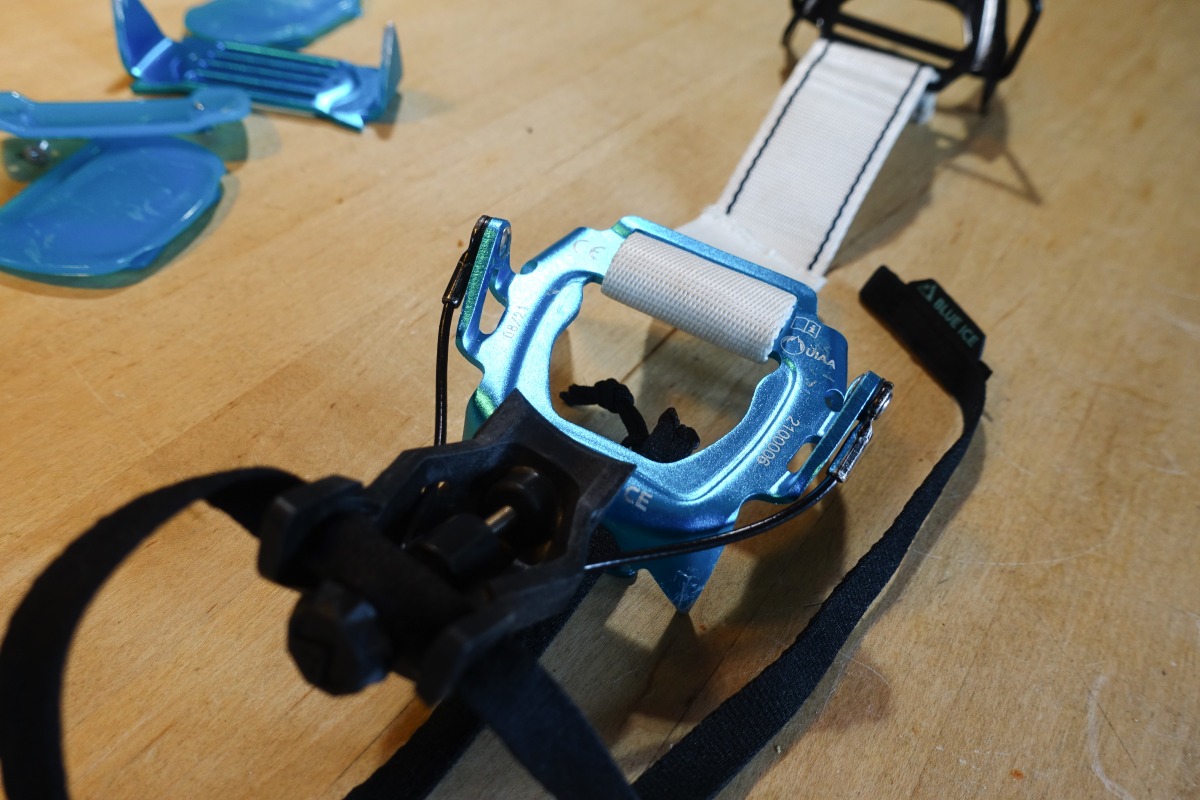
Another view of the Harfang with the midsection and anti-balling plates removed.
During a recent traverse, I brought along the Harfangs for insurance on steeper terrain. The night before departure, my pack punched to 42 pounds. Heavy for me. I began looking for weight-saving options. (Having Kelly enter the scene with a minimalist and spartan pack only added to the perceived need to cut pack weight.) I cut some food and clothing. I also removed the Harfang’s midsection and the anti-balling plates on the front and rear sections. This materials diet cut the Harfang’s weight from 222g/crampon to a verified 176g/crampon. That’s moving in the right direction for longer hauls. Crampon function without the midsection or anti-balling plates on the two occasions the Harfangs came out of the pack was great. I experienced no instability or insecurity either front-pointing or with a hybrid technique. Would I go without the midsection or anti-balling plates regularly? Likely not. But, it’s nice to know I have a weight-saving option if needed.

The 178g/crampon all aluminum Blue Ice Harfang Tour. The Harfang Tour differs from the Harfang as it features an aluminum front section.
Although currently hard to get or downright unavailable, Kelly hauled along a pair of Blue Ice Harfang Tour crampons on our traverse. The Harfang Tours are identical to the original Harfang, except for an aluminum front section (with a steel toe bail). Kelly verified the Harfang Tour’s weight at 178g/crampon. The 178g measurement includes the midsection and anti-balling plates. A comparison of the stripped-down Harfang and the full Harfang Tour, by weight, is maybe comparing a Pink Lady apple to a Macintosh. The Harfang Tour comes with a weight advantage while the Harfang allows for better front section durability in rocky terrain and better performance on true ice.
There’s one small mod I’ll be making. It relates to the ankle strap, which secures around the upper ankle. The two ends of the strap connect by hooking a snazzy aluminum piece through a small sewn loop on the opposing strap. The closure system functions well enough during warm transitions. But I often wear thin liner gloves in the mountains, and I continually fumble with the closure system: For me, the hook and loop system is tough to secure and undo. The hook is a bit too small for my lack of dexterity when wearing liner gloves, as is the sewn loop. Adding a small Fastex buckle as a replacement might be a fix.

The looks are lovely on this ankle strap closure system, the function is sub par for my level of dexterity when wearing thin liner gloves.
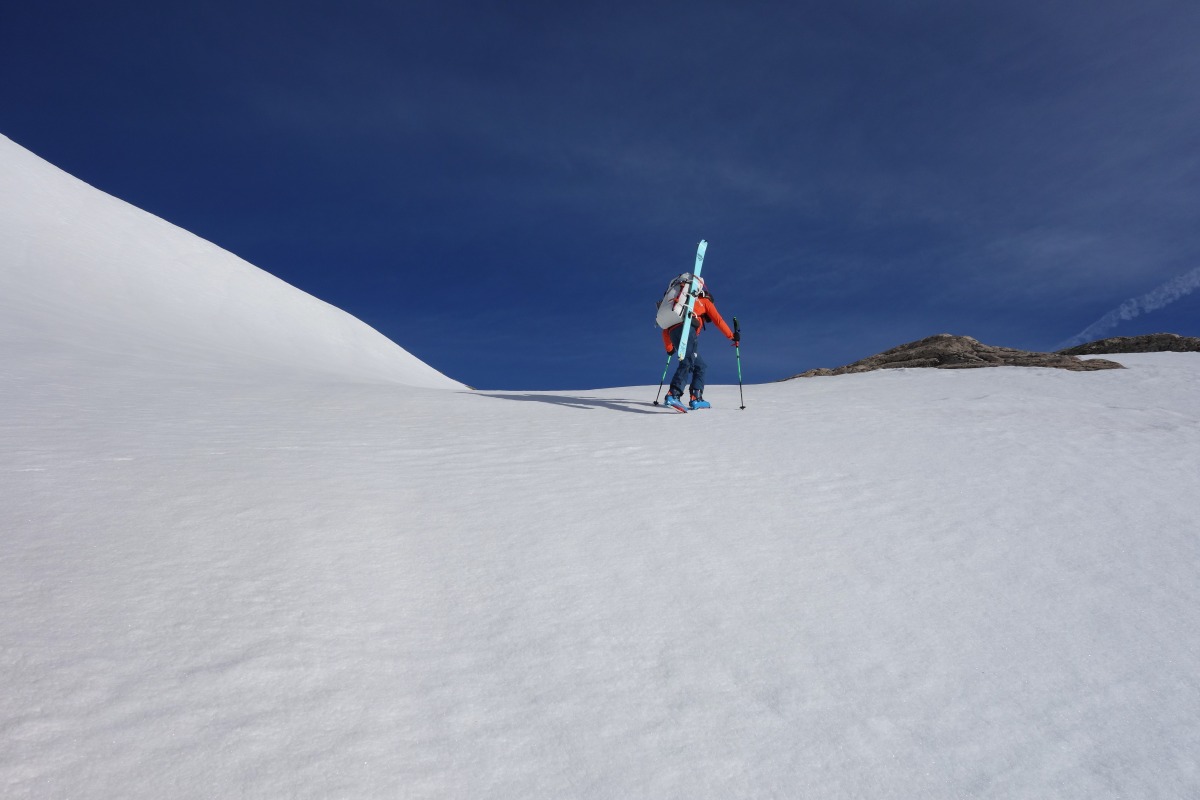
The Blue Ice Harfangs offer up a weight conscious serving of steel and aluminum for a fine crampon experience. Photo: Kelly Cordes.
Coming down the pipe along with the Harfang Tour, Blue Ice plans to release the Harfang Enduro, an all chromoly steel crampon. The same design principles found on the Harfang are in play, but for those banging around more often than not on rock, this might be the tool for you. Blue Ice claims the Harfang Enduro (with anti-balling plates and midsection) weighs 290g/crampon.
Weights for the Harfang crampon line (including all parts):
Harfang: 222g/crampon (verified)
Harfang Tour: 178g/crampon (verified)
Harfang Enduro: 290g/crampon (claimed)
Pricing for the Harfang crampon line:
Harfang: $179.95
Harfang Tour: $169.95
Harfang Enduro: $159.95
Shop for the Blue Ice Harfang.
Jason Albert comes to WildSnow from Bend, Oregon. After growing up on the East Coast, he migrated from Montana to Colorado and settled in Oregon. Simple pleasures are quiet and long days touring. His gray hair might stem from his first Grand Traverse in 2000 when rented leather boots and 210cm skis were not the speed weapons he had hoped for. Jason survived the transition from free-heel kool-aid drinker to faster and lighter (think AT), and safer, are better.
